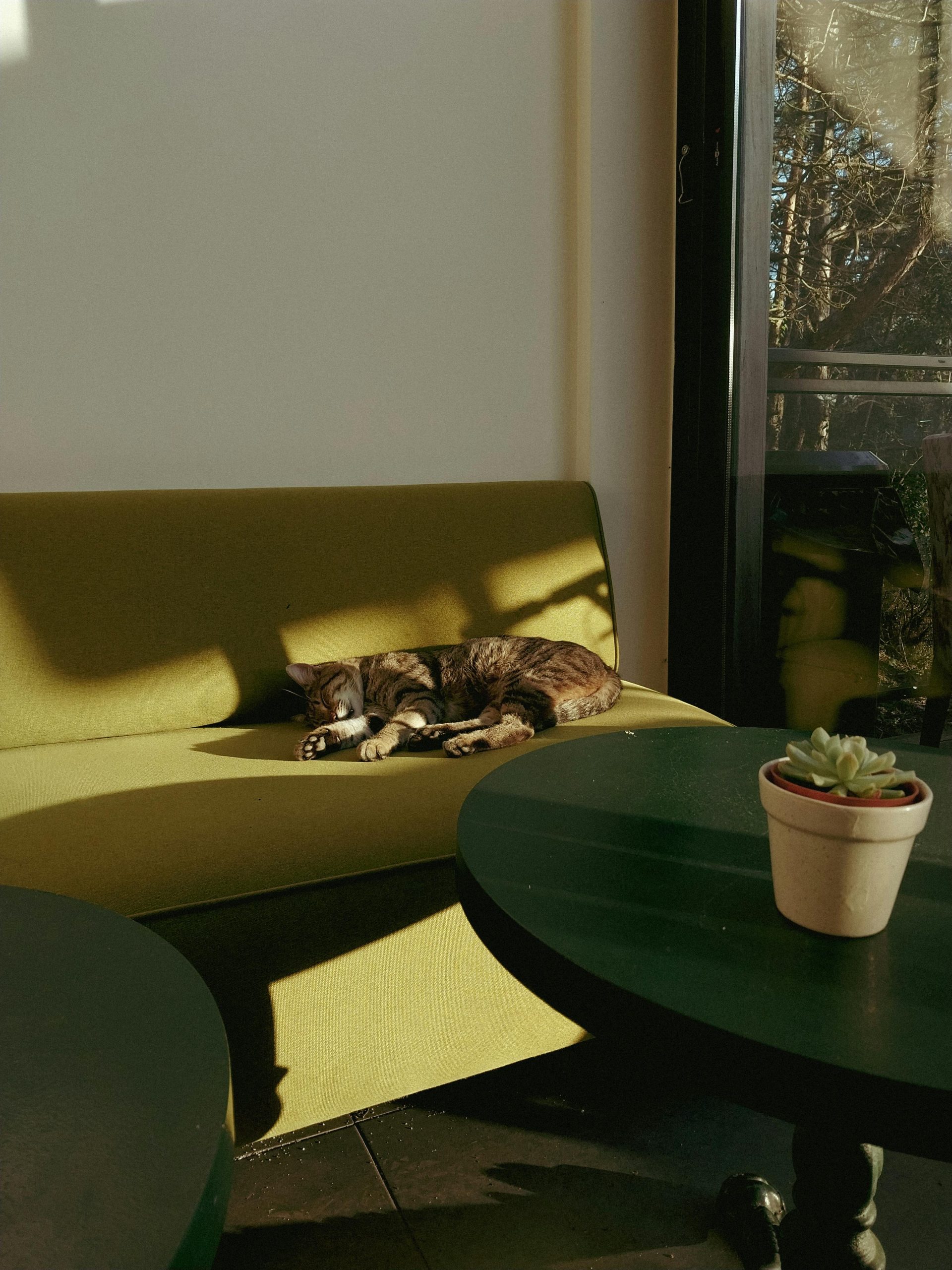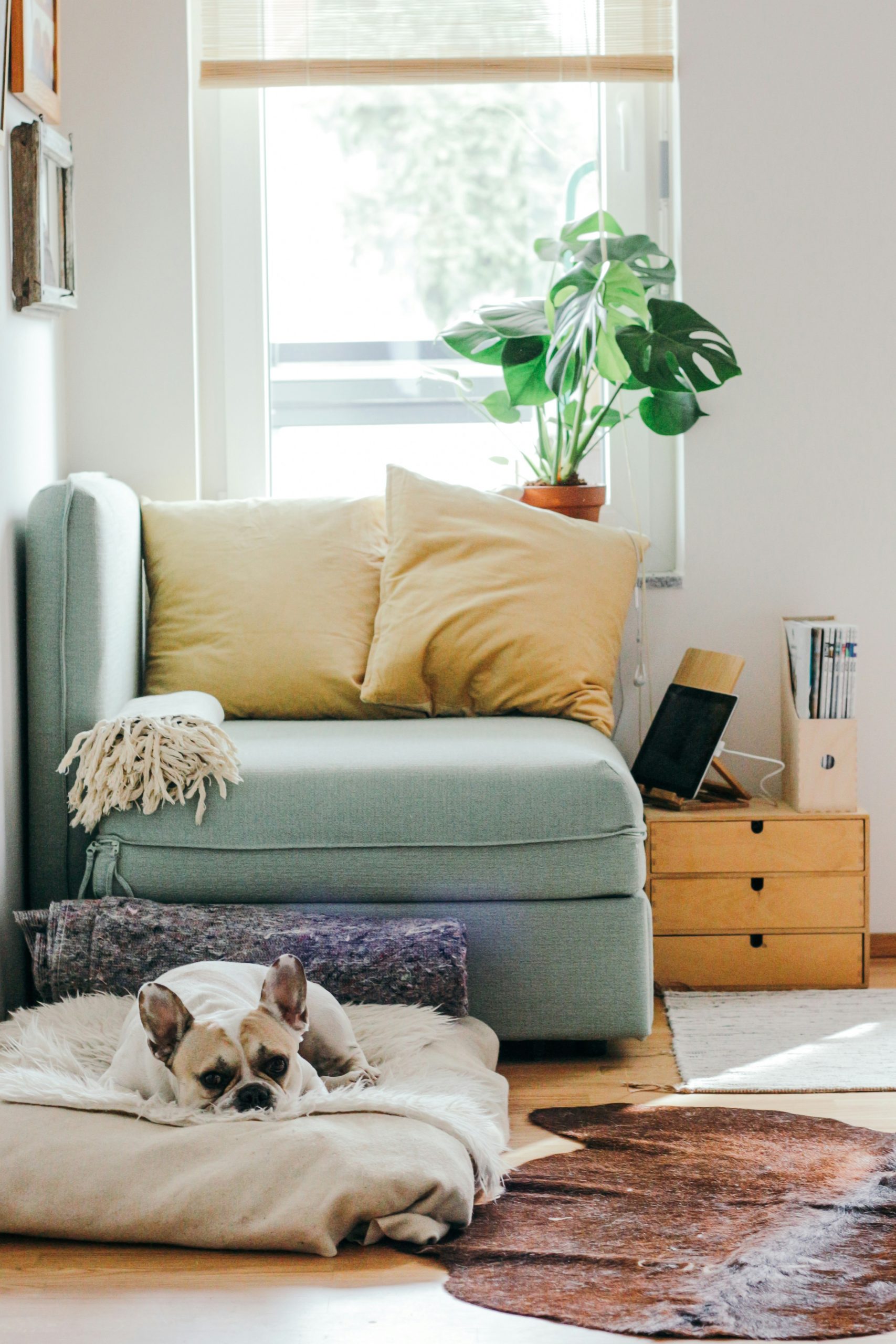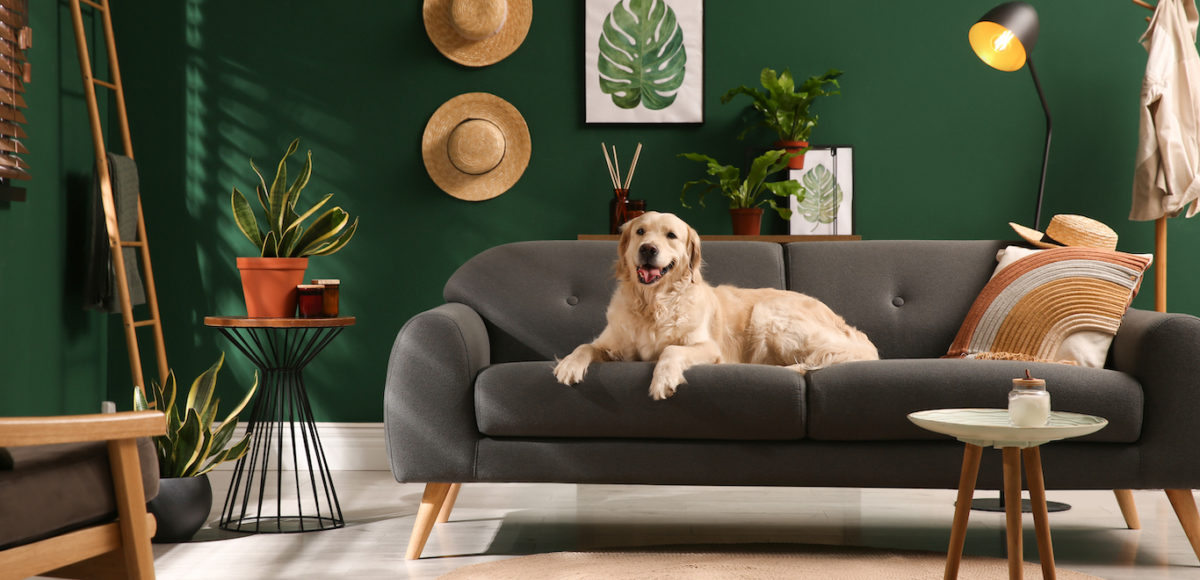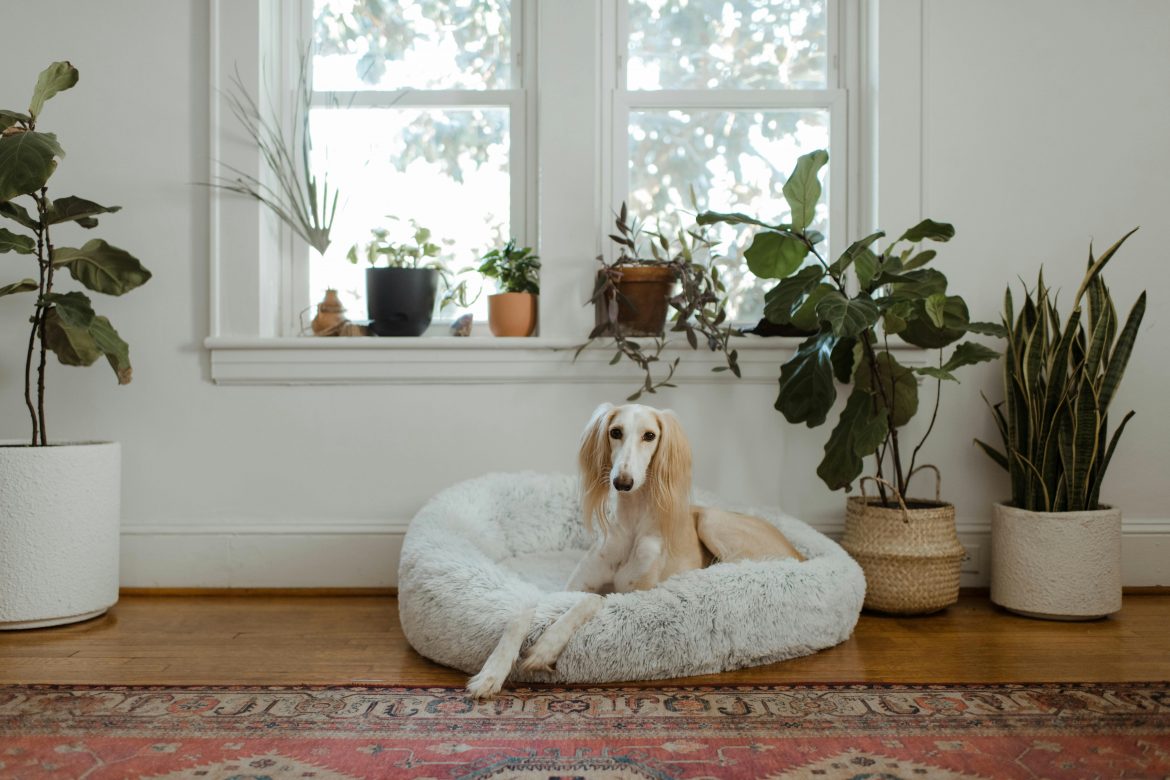Do you share space with your pets? You might want to be strategic when it comes to your home’s colour palette. Here’s what you should consider before you paint and decorate.
Over years and years of evolution, humans have developed receptors that enable us to experience millions of colours. This is not just pleasant for our eyes but different hues can also impact our emotions. While bright hues can make us feel energised and upbeat, soft muted shades can make us feel more calm.
When it comes to selecting shades for our homes, whether it be the interior walls, your furniture or decor theme, the space, its function and your personal taste all come into play when picking a palette that works.
Vivid colour
It would be great if simply choosing a specific wall paint colour or pet bedding hues could have a calming or mood-boosting effect in the same way it can with us humans.
Sadly, however, our animals don’t experience – and their brains don’t process – colour the same way we do. Yes, they have superior night vision to us, but both cats and dogs see the world in pastel tones without the same richness and intensity that we see. Both species also interpret colour much like people with red-green colourblindness. This means that warm colours all look like shades of yellow and cool tones are all seen as varying blues. Cats can pick up some green as well, and many types of birds see colour more vividly than we do.

Pexels
When it comes to the toys we buy our pets, they come in a myriad of bold and exciting shades. Many owners think that buying ones in bright colours, such as red and orange, will make them more visible during a game of fetch.
In actual fact, these colours are perceived more as dull browns and greys, making them more difficult for Fido to find in the grass or bushes.
The best hues to make objects easily identifiable are blues and yellows. You can also easily blend into the background and become less visible to your animals by opting for plain clothing over patterns and prints.
So, the colours we use in our space might not have that much of an effect on our menagerie.
This means that the humans of the household can be completely selfish when it comes to the palette of their property. But, if you have pets, you might want to be more strategic if you want to keep your space looking fresh.
Strategic shades
Anyone who has ever owned a pet knows that things can get messy! From toys being strewn around the house to muddy pawprints on the couch and nose smears on the windows, it’s a responsibility that comes with a lot of cleaning. There are, however, some ways to minimise the appearance of the inevitable wear and tear that is caused by our cats and canines.
Your paint colour
Bright colours can make a great accent wall but they are notorious for showing off smudges. For this reason, if you want a dark colour, it’s best to opt for neutrals, such as charcoal, brown or olive green as with these hues smudges appear less obvious.
Whatever colour you use, it’s a good idea to keep a small tin of it in the event that you need to do any touch-ups if your walls become scratched during rambunctious play.

Unsplash
Your paint finish
Once you have selected your shade, you should also consider the finish of the formula if you have pets.
Finishes that are easiest to wipe clean from dirt and smudges are satin or semigloss as these can be washed down easily with soap and water. Another great thing about them is that they have enough lustre to deflect attention away from scratches on the walls.
Your furniture fabric
Even if your animals aren’t technically allowed on the couch, sometimes they manage to sneak onto them anyway!
As such, it’s worth being mindful of the fabrics and materials you choose not just for your furniture but your soft furnishings, too. Leather or pleather are good because fur won’t stick to it and they can be wiped clean. Denim and canvas are also good as they can be easily spot-cleaned or the covers thrown in the washing machine and they are both tough and durable.
The material used for outdoor furniture is also easy to clean as it is likely water-resistant.

Unsplash
Your fabric design
Unless you have a very well-trained pet, owners should probably give up the dream of owning a white couch!
In fact, this goes for all very light shades as these will pick up dirt and stains will stand out. Dark greys and browns are a better option. When it comes to the design, having a pattern fabric covering is much better than a flat colour as the design will disguise any stains and fur. A textured fabric, on the other hand, can conceal scratch marks as they will blend in better. Genius!
Tip: Exploring toxic-free paints
If you are going to be painting your home and you have pets, it’s a good idea to opt for a brand or formula that is toxin-free and emits minimal fumes so it’s safe for your family and your furry friends.
ALSO SEE:
Featured Image: Unsplash
This article was originally written by Maegan-Leigh Jacobs for Food&Home.

